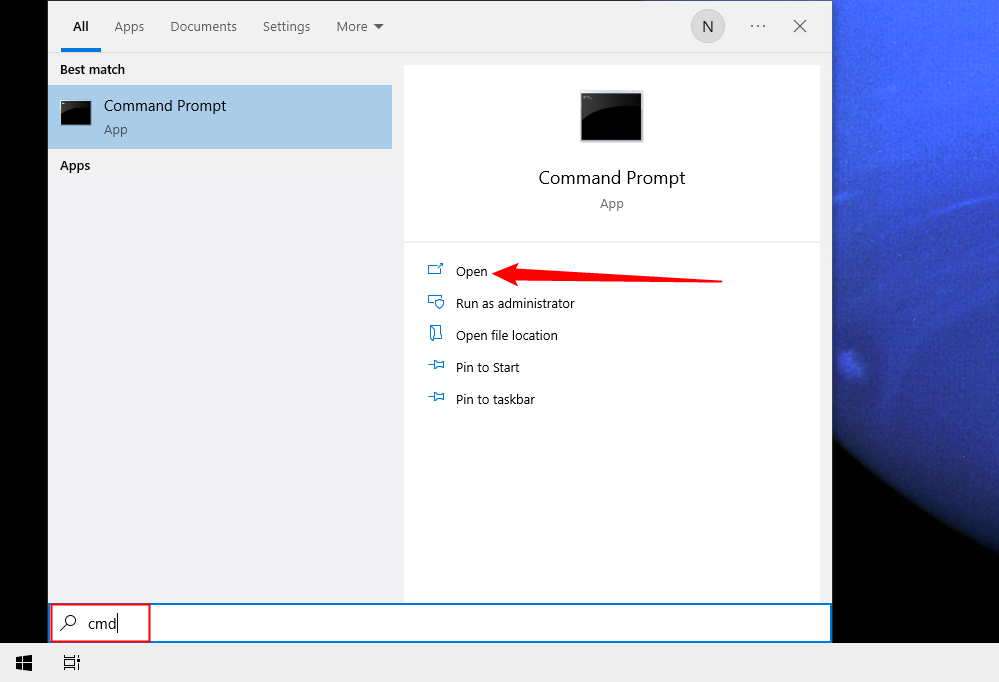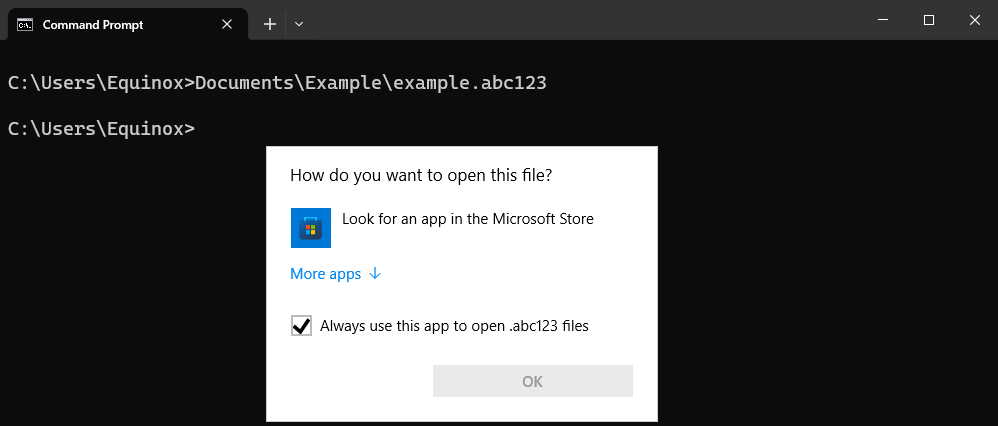
Mastering File Navigation and Opening with Command Prompt

Effortlessly locate and access files on Windows 10 without navigating through File Explorer Let Command Prompt do the work for you by swiftly finding and opening files with ease
Some Noticeable Information
The "dir" command followed by a search term allows you to find files and view their file paths.
To open a file, access its directory by using the "cd" command and input the file name into Command Prompt. If the path or file name contains spaces, enclose them within quotation marks.
After gaining proficiency in navigating directories on Windows 10, the subsequent task is acquiring knowledge on locating and opening files with the Command Prompt. The process is equally straightforward compared to navigating and opening a file in File Explorer. Here is the technique:
Open Command Prompt
To begin, access the Command Prompt on your computer by typing "cmd" in the Windows Search bar. From the search results, select "Command Prompt." Alternatively, you can also open the Run box (Windows + R) and enter "cmd" if you find it more convenient.
With the Command Prompt opened, you’re ready to find and open your file.
Find Files Using Command Prompt
If you're unsure of the file path to the item you want to open, there's no need to navigate through File Explorer only to return to the Command Prompt later. Instead, consider using the following command:
dir "\search term*" /s
Just replace "search term" with, of course, the actual search term. So, if we wanted to locate our file called "Example File," we'd use this command:
dir "\example file*" /s
Command Prompt will now search and find all instances of the search term you entered. It will (1) show you the file path, and (2) give you the file name and extension.
Now that we've found our file, let's open it.
Open Files Using Command Prompt
To access the file, locate the directory in the Command Prompt where the desired file is stored. For demonstration purposes, let's consider a scenario where we have a folder named "Example" inside our "Documents" folder. Thus, we will navigate to that specific location.
To navigate through your folders using Command Prompt, utilize the Change Directories command (cd
cd Documents\Example
Note that you must navigate to the immediate file structure. In this case, we can’t skip “Documents” and jump straight to “Example.”
Once you have inputted your command, press the Enter key. You’ll now be in that folder.
It’s now time to open the file within that folder. Our file is named “Example File.”
To open the file, enter the file name and extension in quotations. In this case:
“example file.docx”
In this case, it is crucial to enclose the file name within quotation marks since there is a space within it. The same applies when there is a space in the folder name. The file is now ready to be opened.
To expedite the process, you can navigate directly to the appropriate folder and open the file with a single command. Assuming we are at the top level again, the command would be:
"Documents\Example\example file.docx"
You can omit the cd command and enclose the entire path in quotation marks. However, it is not strictly necessary. You can also simply add quotation marks around the section of the path that contains spaces.
There are a couple of other important things to keep in mind.
The first is that Windows paths are not case sensitive. You could write "EXAMPLE file.docx" or "eXaMpLe FiLe.dOcX" and Command Prompt wouldn't care.
You can also manually specify the program to use when opening files with unknown file extensions. This process is similar to opening an unfamiliar file format using File Explorer.
This isn't just applicable to the Command Prompt, either. PowerShell behaves the same way as Command Prompt for most jobs, and that is especially true if you're talking about something simple.
Editor's P/S
As a Gen Z fan, I find the article "Mastering File Navigation and Opening with Command Prompt" to be informative and helpful. It provides clear and concise instructions on how to use Command Prompt to find and open files on Windows 10. I appreciate that the article includes specific examples and commands, as this makes it easy to follow along and learn how to use Command Prompt effectively.
Overall, I think this article is a great resource for anyone who wants to learn more about using Command Prompt. It is well-written and easy to understand, and it provides valuable information that can be used to improve productivity and efficiency when working with files on Windows 10.















